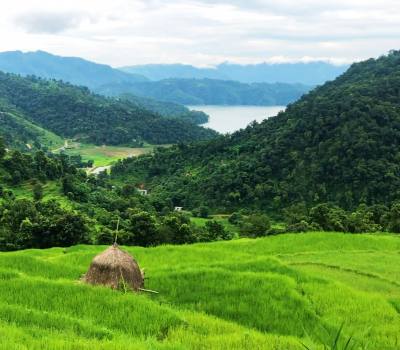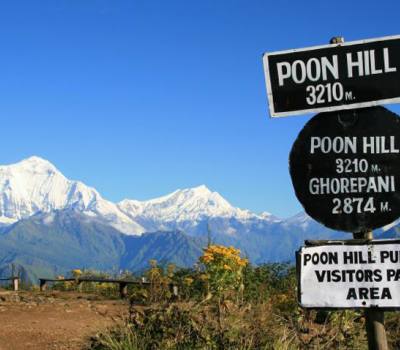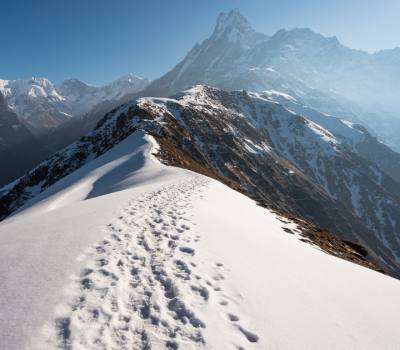Nar Phu Valley Trek
Nar Phu Valley Trek is located in the desolated location of Nepal whereas Nepalese Tibetans settle and they rely upon farming animals. considering that 2003 A.D., Nar Phu Valley, a non-touristic destination has been opened for vacationers to go to and here you can actually discover Tibetan manner of existence, extraordinary mountain sight, and vast alpine panorama. Destination unlimited treks and Expeditions will make your this trek feasible and allow the elevated peaks and passes, glaciers, ways-off villages, charming forests, excellent rock formations, and specific Himalayan cultures praise you with the loving moment.
Nar Phu valley trek begins from Syange wherein we stroll at the path of Annapurna Circuit and separates from Koto to reach Nar Phu valley which is situated in the north of Manang and actions all along the Kang l. a. skip with the first-rate sight of Annapurna massifs. This trek also offers fantastic views of the Lamjung Himal, Manaslu Himal, Machhapuchhre Himal, Tilicho height and Dhaulagiri range. The route follows a rocky area and you may have a look at the alluring Tibetan settlements of Nar and Phu. also, we will cross the Kang l. a. skip (5200m), walk at the less preferred route to Tilicho Lake and the Meso Kanta skip (5089m) which adjoins the Manang and Kali Gandaki valley. moreover, Nar Phu valley mendacity at the dry, deserted Tibetan flat terrain likewise gets entry to Muktinath and Jomsom.
vacation spot unlimited Treks and Expeditions will manipulate to take you to Nar Phu Valley and can help you revel in customs and lifestyle of Nepalese-Tibetan humans, fantastic surroundings and far off hidden peaks so that it will offer you unforgettable revel in.
\
Trip Highlights of Nar Phu Valley Trek
Stunning Scenery
- Remote Landscapes: The trek offers views of rugged mountain terrain, deep gorges, glaciers, and high-altitude plateaus.
- Panoramic Mountain Views: Spectacular views of Annapurna II, Gangapurna, Manaslu, Tilicho Peak, and other Himalayan giants.
Cultural Immersion
- Traditional Villages: Visit the ancient villages of Nar and Phu, where time seems to stand still, and traditional Tibetan culture thrives.
- Tibetan Buddhist Culture: Explore monasteries, chortens, and prayer flags that dot the landscape, reflecting the deep-rooted Buddhist traditions.
- Local Festivals: Experience local festivals if your trek coincides with one, offering a glimpse into the vibrant culture and traditions of the region.
Off-the-Beaten-Path Adventure
- Less Crowded: Compared to more popular trekking routes in Nepal, Nar Phu Valley offers a quieter and more serene trekking experience.
- Restricted Area Permit: Requires a special permit, adding to the sense of adventure and exclusivity.
Diverse Trekking Experience
- Varied Terrain: Trek through a mix of landscapes, including narrow canyons, alpine forests, and high-altitude pastures.
- High Pass Crossings: Cross high passes such as Kang La Pass (5,320 meters), offering challenging trekking and rewarding views.
Wildlife and Flora
- Rich Biodiversity: The region is home to a variety of wildlife, including blue sheep, snow leopards, and Himalayan birds.
- Unique Flora: Discover diverse plant life adapted to the high-altitude environment.
Historical and Archaeological Sites
- Ancient Monasteries: Visit monasteries such as Tashi Lhakhang and Satek Monastery, which hold historical and religious significance.
- Traditional Architecture: Witness traditional stone houses and fortresses that have stood the test of time.
Trekking Highlights
- Koto Village: Starting point of the trek, where trekkers leave the main Annapurna Circuit and head towards the remote valley.
- Phu Village: Explore this ancient village with its medieval atmosphere, narrow alleyways, and stone houses.
- Nar Village: Discover the vibrant village of Nar, with its impressive monasteries and warm hospitality.
Natural Wonders
- Glacial Lakes: Trek past pristine glacial lakes that add to the scenic beauty of the route.
- Unique Rock Formations: Marvel at the interesting rock formations and cliffs carved by centuries of natural forces.
Accommodation and Hospitality
- Teahouses and Homestays: Stay in basic yet comfortable teahouses and homestays, experiencing the local way of life and hospitality.
Physical Challenge and Reward
- Altitude Acclimatization: The trek involves significant altitude gains, requiring proper acclimatization and physical fitness.
- Personal Achievement: Completing the Nar Phu Valley Trek is a rewarding experience, offering a sense of accomplishment and lasting memories.
The Nar Phu Valley Trek is a hidden gem in the Himalayas, offering an unparalleled combination of natural beauty, cultural richness, and adventure.
Outline Itinerary:
- Day 01: Arrival in Kathmandu (1,300m/4,428ft)
- Day 02: Kathmandu: Sightseeing and Trek Preparation( Permit making day- should be not saterday)
- Day 03: Kathmandu to Jagat Drive (1100m/3608ft): 8-9 hours
- Day 04: Jagat to Dharapani (1,960m/6,430ft): 7-8 hours
- Day 05: Dharapani to Koto (2,610m/8,563ft): 5-6 hours
- Day 06: Koto to Meta (3,560m/11,680ft): 7-8 hours
- Day 07: Meta to Phu Gaon (4,250m/13,944ft): 7-8 hours
- Day 08: Acclimatization at Phu Gaon
- Day 09: Phu Gaon to Nar (4,110m/13,484ft): 6-7 hours
- Day 10: Acclimatization and preparation at Nar
- Day 11: Nar to Kang La Pass (5,322m/17,460ft) to Ngwal (3,660m/12,008ft): 7-8 hours
- Day 12: Ngwal to Manang (3,540m/11,614ft): 4-5 hours
- Day 13: Manang to Yak Kharka (4,110m/13,484ft): 3-4 hours
- Day 14: Yak Kharka to Thorong Phedi (4,600m/15,092ft): 3-4 hours
- Day 15: Thorong Phedi to Thorong La (5,416m/17764ft) to Muktinath (3,800m/12,467ft): 7-8 hours
- Day 16: Muktinath to Jomsom (2,715m/8,910ft): 5-6 hours
- Day 17: Jomsom to Pokhara Flight (827m/2,700ft): 20 min flight
- Day 18: Pokhara to Kathmandu (1,300m/4,428ft): 5-6 hours drive
- Day 19: Final departure from Nepal
Detail Itinerary
- Day 01 :Arrival in Kathmandu (1,300m/4,428ft)
- Day 02 :Kathmandu: Sightseeing and Trek Preparation( Permit making day- should be not saterday)
- Day 03 :Kathmandu to Jagat Drive (1100m/3608ft): 8-9 hours
- Day 04 :Jagat to Dharapani (1,960m/6,430ft): 7-8 hours
- Day 05 :Dharapani to Koto (2,610m/8,563ft): 5-6 hours
- Day 06 :Koto to Meta (3,560m/11,680ft): 7-8 hours
- Day 07 :Meta to Phu Gaon (4,250m/13,944ft): 7-8 hours
- Day 08 :Acclimatization at Phu Gaon
- Day 09 :Phu Gaon to Nar (4,110m/13,484ft): 6-7 hours
- Day 10 :Acclimatization and preparation at Nar
- Day 11 :Nar to Kang La Pass (5,322m/17,460ft) to Ngwal (3,660m/12,008ft): 7-8 hours
- Day 12 :Ngwal to Manang (3,540m/11,614ft): 4-5 hours
- Day 13 :Manang to Yak Kharka (4,110m/13,484ft): 3-4 hours
- Day 14 :Yak Kharka to Thorong Phedi (4,600m/15,092ft): 3-4 hours
- Day 15 :Thorong Phedi to Thorong La (5,416m/17764ft) to Muktinath (3,800m/12,467ft): 7-8 hours
- Day 16 :Muktinath to Jomsom (2,715m/8,910ft): 5-6 hours
- Day 17 :Jomsom to Pokhara Flight (827m/2,700ft): 20 min flight
- Day 18 :Pokhara to Kathmandu (1,300m/4,428ft): 5-6 hours drive
- Day 19 :Final departure from Nepal
Cost Includes
- Airport pick-up and drop-off (private transportation)
- Drop to Nayapul and Pick up from Nayapul by Private Van
- Hotel in Pokhara and Kathmandu. Category 2-3 star
- Farewell Dinner by Company
- Trekking Accommodation, Twin Sharing in Basic Tea-house
- English-speaking guides/ Who has excellent knowledge.
- Porters for 2 guest one porter
- All meals( Breakfast, Lunch & Dinner) with tea and coffee
- Fresh Fruits after dinner every evening.
- Transportation to and from the trail head
- All necessary documents and permits for trekking
- Trekking equipment including sleeping bags
- Staff insurance, medication and equipment
- All Govt. and Local Taxes, First Aid Kit
- Special Caring
- T-shirts by Destination Unlimited
- Trekking Certificate by Destination Unlimited.
Cost Excludes
- International airfares, Kathmandu sightseeing and entrance fees
- Travel/trekking insurance/ Nepal entry visa fees
- Mountain rescue charges or insurance
- Bottled drinks on trek (cold and alcoholic) and hot drinks which is not mentions above
- Lunches and dinners in Kathmandu and Pokhara
- Additional food or drink on trek in addition to three standard meals
- Personal expenses, Emergency Expenses, road blocked, snakes, desert.etc
- Which is not mention in email
- Tips(Tipping are expected)
1. What is the Nar Phu Valley Trek?
The Nar Phu Valley Trek is a remote and off-the-beaten-path trek in the Annapurna region of Nepal, taking trekkers through the hidden valleys of Nar and Phu, offering stunning landscapes and unique cultural experiences.
2. Where is the Nar Phu Valley located?
The Nar Phu Valley is situated in the northwestern region of Nepal, near the border with Tibet, within the Annapurna Conservation Area.
3. How long is the Nar Phu Valley Trek?
The trek typically takes around 17-22 days, depending on the itinerary, acclimatization days, and any additional side trips.
4. What is the best time to trek in the Nar Phu Valley?
The best times to trek are during the pre-monsoon (March to May) and post-monsoon (September to November) seasons, when the weather is stable, and the views are clear.
5. What permits are required for the trek?
Trekkers need the following permits:
- Annapurna Conservation Area Permit (ACAP)
- Trekker’s Information Management System (TIMS) card
- Special Restricted Area Permit for Nar Phu Valley
6. Do I need a guide for the Nar Phu Valley Trek?
Yes, hiring a guide is mandatory for the Nar Phu Valley Trek due to its remote and restricted nature. A guide ensures safety, helps with navigation, and enhances the cultural experience.
7. What is the difficulty level of the trek?
The Nar Phu Valley Trek is considered moderately difficult, with challenging terrain, high altitude, and long trekking days. Prior trekking experience and good physical fitness are recommended.
8. What kind of accommodation is available?
Accommodation ranges from basic teahouses and lodges to homestays in the villages of Nar and Phu. Facilities are more basic compared to more popular trekking routes.
9. What is the highest point on the trek?
The highest point is Kang La Pass at 5,320 meters (17,454 feet), offering spectacular panoramic views of the surrounding peaks.
10. How do I prepare for the trek?
Preparation includes physical training, proper gear selection, obtaining necessary permits, and arranging a guide and porter. It's also important to acclimatize properly to prevent altitude sickness.
11. Is altitude sickness a concern on this trek?
Yes, altitude sickness is a potential risk due to the high elevations. Proper acclimatization, hydration, and gradual ascent are essential to minimize the risk.
12. What should I pack for the trek?
Essential items include:
- Warm clothing for varying temperatures
- Sturdy trekking boots
- Sleeping bag rated for cold weather
- Personal first aid kit
- Trekking poles
- Sunscreen, sunglasses, and a hat
- Snacks and energy bars
13. Are there any health facilities along the trek?
Health facilities are limited. Trekkers should carry a comprehensive first aid kit and any necessary medications. In case of serious illness or injury, evacuation may be required.
14. What kind of food is available during the trek?
Teahouses and lodges offer a variety of meals, including traditional Nepali dishes like dal bhat, as well as Tibetan and basic Western cuisine. Availability becomes more limited at higher altitudes.
15. Is it possible to combine the Nar Phu Valley Trek with other treks?
Yes, the trek can be combined with the Annapurna Circuit Trek, offering a more extensive trekking experience in the region.
16. What cultural experiences can I expect?
Trekkers will experience traditional Tibetan Buddhist culture, visit ancient monasteries, interact with local villagers, and witness traditional farming and herding practices.
17. What wildlife might I see on the trek?
The region is home to various wildlife, including blue sheep, Himalayan thar, snow leopards, and a variety of bird species.
18. Is it safe to trek in the Nar Phu Valley?
Yes, the trek is generally safe, but it is remote and less frequented. Having a guide, proper preparation, and staying informed about weather conditions are essential for safety.
Trip Map

Quick Enquiry
Key Information
-
Trip Cost US$ 1450
-
Trip Duration 19 Days
-
Destination Nepal
-
Trip Difficulty Strenuous
-
Trip Style Trekking
-
Accomodation Hotel + Lodges
-
Max Altitude 5322 m
| No of people | Price P.P |
| 1-1 Pax | US$ 1450 |
| 2-4 | US$ 1399 |
| 6-8 | US$ 1350 |
Similar Trips
-
Khorpa Danda Trek Annapurna Dhaulagiri Community Trek
DURATION: 15 Days -
Mardi Himal Trek
DURATION: 11 Days -
Annapurna Circuit Trek cost
DURATION: 19 Days -
Short Annapurna Base Camp
DURATION: 10 Days -
Royal Trek
DURATION: 9 Days -
Ghorepani Poon Hill Trek cost
DURATION: 10 Days -
Jomsom Muktinath Trekking
DURATION: 11 Days -
Dhampus Sarangkot Trek
DURATION: 8 Days -
Annapurna Base Camp Trek
DURATION: 15 Days -
Annapurna Base Camp trek 6 days cost
DURATION: 6 Days -
Mardi Himal Trek 5 days cost
DURATION: 5 Days
















